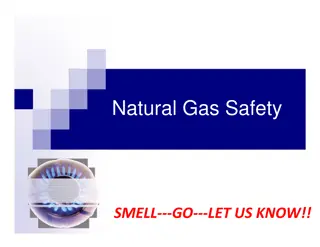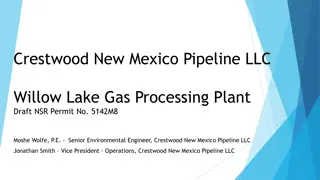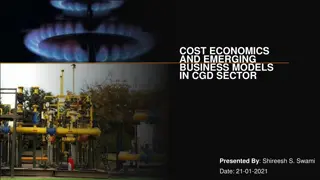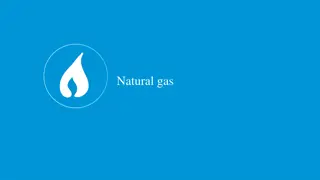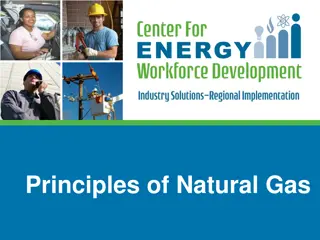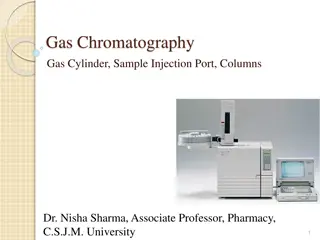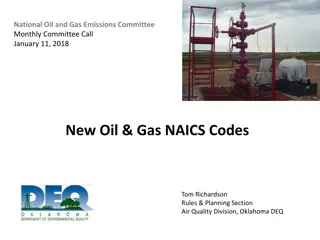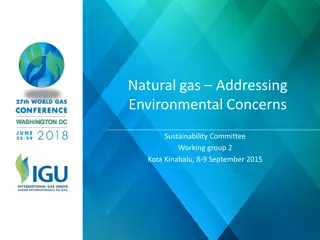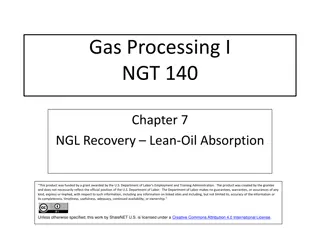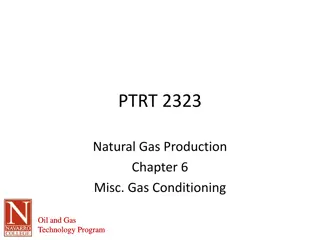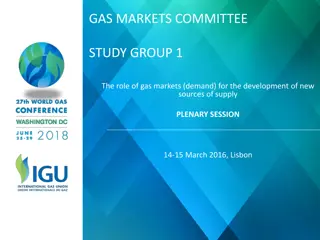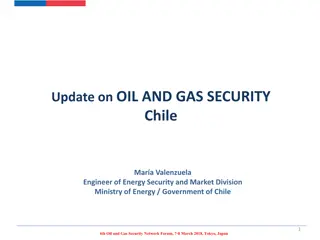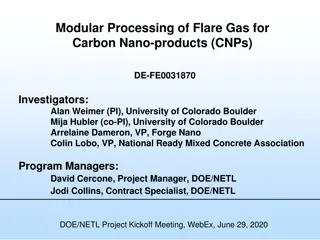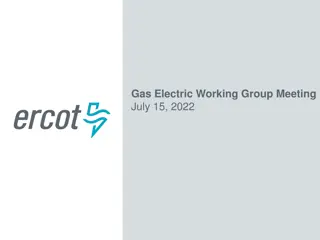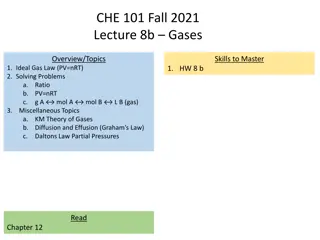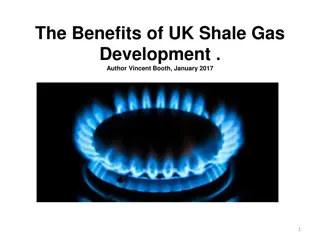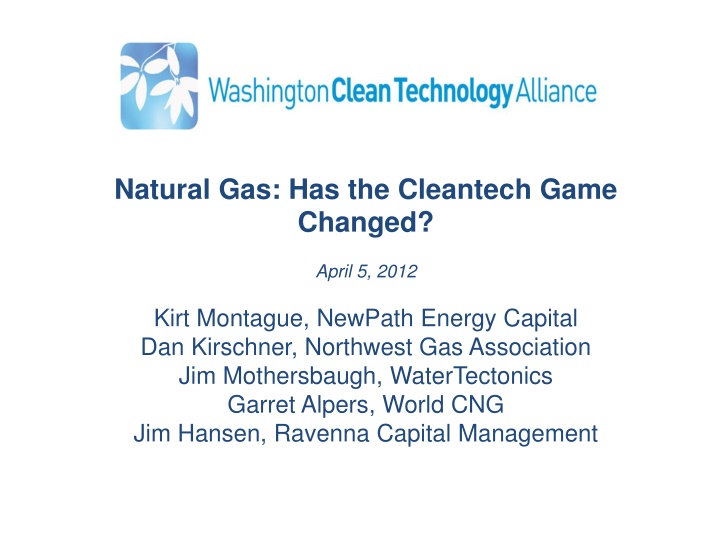
Changing Dynamics of Natural Gas in Energy Sector
Discover how natural gas is revolutionizing the energy sector with increasing supply, stable pricing, and a growing market for natural gas vehicles. Learn about the impact of shale gas discoveries and the forecasted fuel price differentials between natural gas and other fuels. Explore the potential of natural gas to shape the future of clean energy technologies.
Download Presentation

Please find below an Image/Link to download the presentation.
The content on the website is provided AS IS for your information and personal use only. It may not be sold, licensed, or shared on other websites without obtaining consent from the author. If you encounter any issues during the download, it is possible that the publisher has removed the file from their server.
You are allowed to download the files provided on this website for personal or commercial use, subject to the condition that they are used lawfully. All files are the property of their respective owners.
The content on the website is provided AS IS for your information and personal use only. It may not be sold, licensed, or shared on other websites without obtaining consent from the author.
E N D
Presentation Transcript
Natural Gas: Has the Cleantech Game Changed? April 5, 2012 Kirt Montague, NewPath Energy Capital Dan Kirschner, Northwest Gas Association Jim Mothersbaugh, WaterTectonics Garret Alpers, World CNG Jim Hansen, Ravenna Capital Management
Fundamental Shift in Energy Sector May 10, 2010 Shale Gas Will Rock the World Huge discoveries of natural gas promise to shake up the energy markets and that s just for starters. 100.00 90.00 billion cubic feet per day 80.00 70.00 60.00 50.00 40.00 30.00 20.00 10.00 0.00 2005 2007 2009 2011 2013 2015 2017 2019 2021 2023 2025 2027 2029 2031 2033 2035 Offshore Onshore conventional Coalbed Methane Shale Gas Alaska Pipeline Imports LNG Import Capacity Demand 2003 2010
OilIncreasing Demand, Increasing Prices World Primary Energy Demand (Million Tons Oil Equivalent) Increasing Demand International Energy Agency (IEA) World Energy Outlook forecasts increased energy demand with non OECD countries (primarily China) leading the way. International Crude Oil Price Estimates ($/Barrel) Increasing Prices IEA forecasts increased oil prices as the world economy recovers and global demand grows. Various estimates exist but in general the trend is for flat to increasing prices from the present $80/barrel Source: International Energy Agency (IEA) World Energy Outlook2010
Natural GasIncreasing Supply, Flat or Stable Pricing Increasing Supply US Energy Industry Associates (EIA) Early 2011 Outlook estimates 120+ years of gas reserves in the US and doubled their estimate from last year of recoverable unproved shale gas from 319 to 827 trillion ft3 trillion. Flat or Stable Pricing Credit Suisse Commodity Group predicts that the substantial low-cost natural gas reserves will keep natural gas prices in check.
Increasing Price Gap Forecasted Fuel Price Differential $/mmBTU CNG, on average, costs 42% less than diesel fuel on an energy equivalent basis and is expected to cost 50% less by 2035. A significant gap / arbitrage exists between CNG and LNG compared to diesel or propane. Notes: Historical diesel price is No 2 distillate U.S average Diesel future price is estimated using the historic basis differential to crude oil, as applied to forward crude prices
Growing Natural Gas Vehicle Market US has110,000 NGVs on roads today. Over 12 million operating worldwide ~1,000 NGV fueling stations exist in the U.S., only about half of which are open to the public. Transit buses account for about 66% of all vehicular natural gas use. Waste collection and transfer vehicles account for about 11 percent and are the fastest growing NGV segment. Source: International Association of Natural Gas Vehicles Blue bars represent total growth since 2000 (21% p.a.) Red Bars denote projected growth from 2006 EIA predicts the amount of natural gas consumed in the US for vehicle use more than doubled between 2000 and 2009, now displacing more than 300 million diesel gallon equivalents each year. The International Association of Natural Gas Vehicles estimates that there will be more than 50 million natural gas vehicles worldwide within the next 10 years, or about 9 percent of the world transportation fleets. Despite global growth trends, the US still lags the global market for overall penetration of natural gas vehicles due in part to the lack of developed refueling infrastructure. Source: International Association of Natural Gas Vehicles Note 1: Natural Gas Vehicle Association (http://www.ngvc.org) Note 2: International Association of Natural Gas Vehicles
Our thanks to Dorsey & Whitney for their support! Contact WCTA for information on Membership, Committees, and Sponsorship opportunities at (206) 389-8655, or visit www.wacleantech.org . Thank you and see you at our next event on May 3rd


